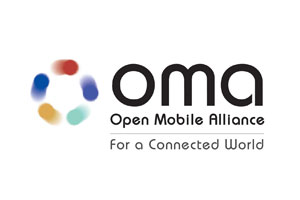With a strong industry forecast of significant growth in connected M2M devices reaching billions within the next five years, it is clear that all sectors from consumer devices and healthcare, to transportation, retail and public safety will be impacted in a positive way with the explosion of M2M deployments.
As this internet of things grows, so will the need and complexity for all of these devices to be remotely managed, whether they are being reminded to transmit and process data, or are under maintenance and undergoing upgrades.
To be able to standardise these processes at the service layer as the market grows, a new communication protocol, Lightweight M2M or LWM2M, is being introduced. This new standard acts as a communications protocol between LWM2M software clients embedded on a range of M2M devices and their M2M management platforms.
The term “lightweight” has been inspired by the deliberate design to make such a protocol simplistic, so that
the amount of data transferred between the devices and management platforms is as small as possible and can work on any connection speed. LWM2M is a new effort at the Open Mobile Alliance (OMA), which includes a team of experts from system, software and service providers.
Device Management
Device management is not a new subject within the industry. Other non-M2M devices have been around for a while and they also require remote configuration and management, such as VoIP phones or smart phones.
Technical standards have been created to manage these kinds of devices, for example TR-069 from the Broadband Forum for remote management of end user devices such as gateways and set-top boxes and OMA DM from the Open Mobile Alliance for smart phones.
The design goal of LWM2M was to create a mechanism that is not only suitable for powerful computing devices such as Android-based smartphones but in particular caters to the needs of more constrained M2M devices, such as those that run a lifetime on a single battery or that need to be very low cost. Furthermore, LWM2M not only supports device management but also provides the means to enable entire M2M services.
LWM2M has five outstanding characteristics: first it features a modern architectural design appealing to software developers and second, it defines a data model that is extensible to enable any kind of M2M service.
Additionally, it has been designed with performance and constraints of M2M devices in mind, therefore enabling low-cost devices. LWM2M also builds on an internet-style protocol called CoAP, or constrained application protocol, which is highly optimised for M2M services as it is designed for communication with performance-constrained devices and networks, meaning less data is transmitted over the wide area network interface. Finally, LWM2M can be used across any type of network.
As the specification has developed, testing of the new protocol has taken place at test events, with the latest OMA Test Fest in January 2015, organized by OMA and Vodafone.
This test event was very popular with participating companies bringing 6 LWM2M server and 9 LWM2M client implementations. Goals achieved were to validate interoperability of this new standard and feed back any issues and improvements into the OMA standards process.
OMA’s work on LWM2M is in line with the standardisation work of the oneM2M Partnership Project, where CoAP and OMA LWM2M are considered key components of the globally standardised M2M architecture.
Commercial Benefits
An open specification such as LWM2M can help increase the number of vendors available to an M2M customer.
LWM2M has the potential to open up a partially closed market, as previously a large part of the M2M market was developed by manufacturers creating M2M modules, terminals and devices with limited remote management capability.
By having a more open management standard, the market becomes more open with M2M devices being interoperable with different management systems from different vendors. This should also promote more independent innovation on the device and server sides.
The Road Ahead
The standards development process takes place in the presence of existing commercial implementations. The process of developing LWM2M benefits from the participation of a broad range of industry players, taking advantage of OMA’s deep experience in device management, as well as the work taking place in the CoAP specification. Since LWM2M 1.0 got out the door, OMA members are now in the process of adding new capabilities such as gateway support and further useful improvements.
Standards such as Lightweight M2M will be the key to unlock the real potential of M2M communications and move towards the often-predicted prospering market with immeasurable compelling services offered by billions of devices.
 Open source projects have already been created around the OMA LWM2M Developer ToolKit and developer tools are now available https://github.com/OpenMobileAlliance/OMA-LwM2M-Public-Review/wiki which will help companies to start leveraging LWM2M to enable their products and services. One method for doing this is via LWM2M Objects. Stay tuned for our next article about how LWM2M Objects are created, what they do, and their role in the growing LWM2M eco-system.
Open source projects have already been created around the OMA LWM2M Developer ToolKit and developer tools are now available https://github.com/OpenMobileAlliance/OMA-LwM2M-Public-Review/wiki which will help companies to start leveraging LWM2M to enable their products and services. One method for doing this is via LWM2M Objects. Stay tuned for our next article about how LWM2M Objects are created, what they do, and their role in the growing LWM2M eco-system.
Friedhelm Rodermund is a IoT consultant working with Vodafone Group R&D and is a member of the Open Mobile Alliance DM working group and editor of the Lightweight M2M technical specification










